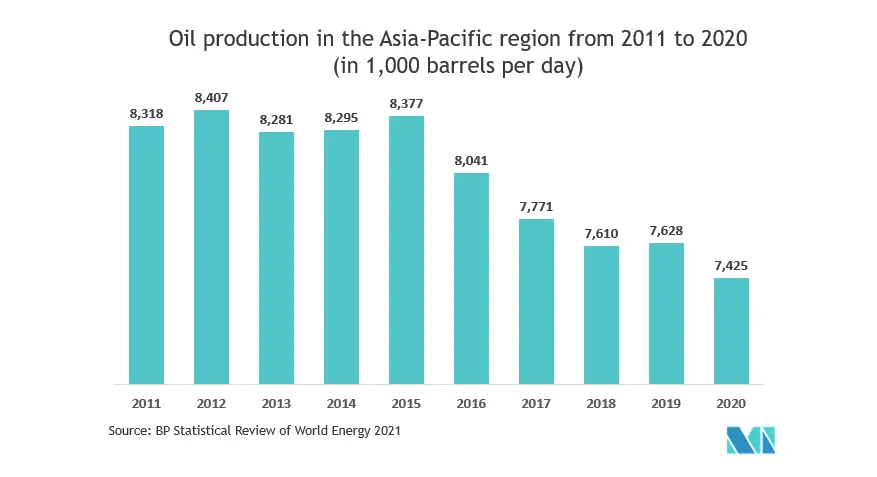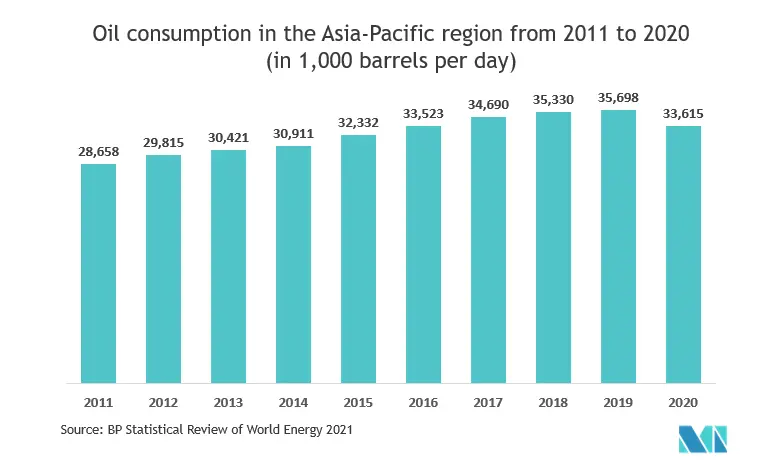Market Trends of APAC Oil & Gas Automation Industry
This section covers the major market trends shaping the APAC Oil Gas Automation Market according to our research experts:
Digital Technologies to increase the production efficiency
- As Industry 4.0 technology emerges in the oil and gas sector, solution providers are introducing additional sensors or controllers that need to replace existing controllers before realizing the benefits of the upcoming digital technologies.
- For example, companies are developing and deploying additional sensors to measure pressure, temperature, vibration, and flow in the underground area or at or near the wellhead. This solution involves sending large datasets to the cloud over IoT gateways and hubs. In the cloud, data scientists build AI-based machine learning models. This requires a significant capital investment, but as mentioned above, it is currently severely restricted.
- A significant proportion of artificially lifted wells already have sensors and automation equipment installed in the last few decades or earlier. However, the problem is that the controller performs only essential control functions. This provides sufficient computational power to perform the simple functions of operating an artificial lift device with the preset operating settings specified by the operator or production engineer using SCADA software.

Increase in the consumption of Oil is pushing for automation
- To keep up with such increasing demand, companies are often turning toward automation strategies to maintain high efficiencies of their production environments. Hence, compared to all three streams of oil and gas, the penetration of automation is comparatively high in the downstream sector.
- Gas demand is estimated to have declined by 2.3% in 2020, much like what the market saw in 2009 after the financial crisis. Consumption declined in most regions except China, where gas demand increased by almost 7%.
- In the downstream sector, the efficiency of the assets determines the return on investment (ROI) factors. The turnaround schedules of the refineries that last for at least three to five weeks in some cases demonstrate the importance of maintaining these assets.
- Over the forecast period, the industry is expected to witness a considerable increase in the number of IoT solutions and predictive maintenance systems combined with SCADA, PLC, and HMI systems.
- Automation technologies may dramatically enhance productivity and efficiency while also helping the industry maintain high production output. For example, consider countries like the United Kingdom, where technology penetration is considerably high in the oil and gas sector.


